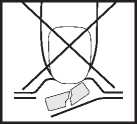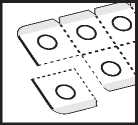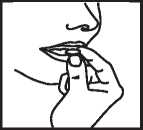Quinapril/Hydrochlorothiazide 20/25 Mg Film-Coated Tablets





Package leaflet: Information for the user
Quinapril/Hydrochlorothiazide 10/12.5 mg film-coated tablets Quinapril/Hydrochlorothiazide 20/12.5 mg film-coated tablets Quinapril/Hydrochlorothiazide 20/25 mg film-coated tablets
Quinapril/Hydrochlorothiazide
Read all of this leaflet carefully before you start taking this medicine medicine because it contains important information for you
- Keep this leaflet. You may need to read it again.
- If you have any further questions, ask your doctor or pharmacist.
- This medicine has been prescribed for you only. Do not pass it on to others. It may harm them, even if their signs of illness are the same as yours.
- If you get any side effects, talk to your doctor or pharmacist. This includes any possible side effects not listed in this leaflet. See section 4.
What is in this leaflet:
1. What Quinapril/Hydrochlorothiazide is and what it is used for
2. What you need to know before you take Quinapril/Hydrochlorothiazide
3. How to take Quinapril/Hydrochlorothiazide
4. Possible side effects
5. How to store Quinapril/Hydrochlorothiazide
6. Contents of the pack and other information
1. What Quinapril/Hydrochlorothiazide is and what it is used for
Quinapril/Hydrochlorothiazide film-coated tablets contain medicines called (i) quinapril and (ii) hydrochlorothiazide. Both of these medicines reduce blood pressure.
(i) Quinapril belongs to a class of medicines known as “ACE inhibitors”. Quinapril helps blood vessels relax and so lowers blood pressure.
(ii) Hydrochlorothiazide belongs to a group of medicines called thiazide diuretics (also known as “water tablets”). Hydrochlorothiazide inhibits the ability of the kidneys to retain fluid and this leads to a reduction in blood pressure.
Quinapril/Hydrochlorothiazide is used to treat high blood pressure in patients who are already taking (i) quinapril and (ii) hydrochlorothiazide as separate tablets and who may benefit from taking one tablet containing both substances.
2. What you need to know before you take Quinapril/Hydrochlorothiazide
DO NOT take Quinapril/Hydrochlorothiazide if you
• are allergic to
- quinapril hydrochloride
- any other ACE inhibitors
- hydrochlorothiazide
- medicines containing sulfonamides
- any other ingredients of Quinapril/Hydrochlorothiazide(listed in section 6).
• have developed severe allergic reactions after previous treatment with an ACE inhibitor. Such reactions lead to swelling of the face, hands or feet, lips, tongue or throat - which can cause shortness of breathe or difficulty in swallowing (angioedema).
• suffer from hereditary or unexplained swelling of the skin (angioedema)
• have severe kidney or liver problems.
• have aortic stenosis (narrowing of the main blood vessel from the heart).
• If you are more than 3 months pregnant. (It is also better to avoid Quinapril/Hydrochlorothiazide in early pregnancy - see pregnancy section.)
• if you have diabetes or impaired kidney function and you are treated with a blood pressure lowering medicine containing aliskiren.
Warnings and precautions
Talk to your doctor or pharmacist before taking Quinapril/Hydrochlorothiazide if you:
• have heart, liver or kidney problems
• have lost a lot of body salts or fluids (through being sick (vomiting), having diarrhoea, sweating more than usual, being on a low salt diet, taking diuretics (water tablets) for a long time or having had dialysis
• have allergies or asthma
• are going to have treatment to reduce your allergy to bee or wasp stings (desensitization)
• are known to have an obstructed outflow from the heart
• have collagen vascular disease such as scleroderma or systemic lupus erythematosus
• are about to have a treatment called LDL apheresis for removal of cholesterol
• have diabetes or gout.
• are of child bearing potential, talk to your doctor about adequate contraception.
• are breast-feeding or about to start breast-feeding
• if you are taking any of the following medicines used to treat high blood pressure:
- an “angiotensin II receptor blocker” (ARBs) (also known as sartans - for example valsartan, telmisartan, irbesartan), in particular if you have diabetes-related kidney problems.
- aliskiren
• Your doctor may check your kidney function, blood pressure, and the amount of electrolytes (e.g. potassium) in your blood at regular intervals.
See also information under the heading “Do not take Quinapril/Hydrochlorothiazide”
Contact your doctor immediately if you experience symptoms such as a sudden decreased vision or eye pain. Symptoms usually occur within hours to weeks after starting treatment with Quinapril/Hydrochlorothiazide and may be signs of acute transient myopia and a form of acute glaucoma (angle-closure glaucoma).
You must tell your doctor if you think you are (or might become) pregnant. Quinapril/Hydrochlorothiazide is not recommended in early pregnancy, and must not be taken if you are more than 3 months pregnant, as it may cause serious harm to your baby if used at that stage (see pregnancy section).
At the start of treatment, more frequent medical check-ups may be necessary.Your doctor will decide how often you need to be checked. You should not skip these visits even if you feel well.
If your blood pressure falls too much and you feel faint then you should lie down. You may need medical help.
Other medicines and Quinapril/Hydrochlorothiazide
Tell your doctor or pharmacist if you are taking or have recently taken or might take any other medicines.
The effect of Quinapril/Hydrochlorothiazide can be affected by or can affect the following medicines:
• Other medicines used to lower blood pressure
• diuretic medicines (water tablets)
• Medicines which lead to increases in the level of potassium in the blood:
- blood thinning medicines (e.g. heparin)
- potassium supplements or salt substitutes containing potassium
• Lithium, used for mental health
• Drugs that have a sedative effect. This includes alcoholic drinks and sleeping pills
• Anti-inflammatory medicines such as hydrocortisone, prednisolone, ACTH
• Non-steroidal anti-inflammatory drugs (for example, aspirin or ibuprofen).
• Insulin or tablets taken for diabetes to control the blood sugar
• Antacids (medicines used for indigestion)
• Medicines used during surgical operations to relax muscles (e.g. tubocurarine)
• Procainide and digoxin, used to treat heart problems.
• Allopurinol, used to treat gout
• Ciclosporin and other medicines used to suppress the body’s immune response
• Drugs used in cancer therapy
• Tetracycline, an antibiotic
Surgery
• Remember to tell any medical staff that you are taking Quinapril/Hydrochlorothiazide. This is important if you go into hospital for an operation as your anaesthetist will want to know.
Your doctor may need to change your dose and/or to take other precautions:
If you are taking an angiotensin II receptor blocker (ARB) or aliskiren (see also information under the headings “Do not take Quinapril/Hydrochlorothiazide” and “Warnings and precautions”)
Taking Quinapril/Hydrochlorothiazide with food and drink and alcohol
Quinapril/Hydrochlorothiazide can be taken with or without a meal.
Pregnancy and breast-feeding and fertility
If you are pregnant or breast-feeding, think you may be pregnant or are planning to have a baby, ask your doctor or pharmacist for advice before taking this medicine.
Pregnancy
You must tell your doctor if you think you are (or might become) pregnant. Your doctor will normally advise you to stop taking Quinapril/Hydrochlorothiazide before you become pregnant or as soon as you know you are pregnant and will advise you to take another medicine instead of Quinapril/Hydrochlorothiazide . Quinapril/Hydrochlorothiazide is not recommended during pregnancy, and must not be taken when more than 3 months pregnant, as it may cause serious harm to your baby if used after the third month of pregnancy.
Breastfeeding
Tell your doctor if you are breast-feeding or about to start breast-feeding. Quinapril/Hydrochlorothiazide is not recommended for mothers who are breast-feeding.
Driving and using machines
The tablets may make you feel dizzy. Therefore, you should be careful when driving or using machines.
Quinapril/Hydrochlorothiazide contains
Quinapril/Hydrochlorothiazide film-coated tablets contain lactose (a type of sugar). If you have been told by your doctor that you have an intolerance to some sugars, contact your doctor before taking this medicinal product
3. How to take Quinapril/Hydrochlorothiazide
Always take this medicine exactly as your doctor has told you. Take the tablet with plenty of water. The tablets can be taken irrespective of the food intake in the morning. You should check with your doctor or pharmacist if you are not sure. The usual dose is:
Adults:
The starting dose is one tablet in the morning. Your doctor may increase the dose if he feels that the dose is not sufficient.
Renal impairment
Use of Quinapril/Hydrochlorothiazide should be avoided if you have severely impaired kidney function.
In patients with renal impairment, your doctor may prescribe you a lower dose.
Elderly:
If you are elderly you should use Quinapril/Hydrochlorothiazide with caution. Your doctor will prescribe the lowest effective dose.
Children and adolescents (less than 18 years of age):
Quinapril/Hydrochlorothiazide is not recommended for use in children and adolescents.
Take this tablet as follows:
1. Do not push the tablet
Do not push against the tablet pocket.
2. Tear off one tablet pocket
Bend and tear off one tablet pocket along the dotted lines.
3. Peel off the lid
Lift, hold and peel off the lidding foil, starting from the side indicated by the arrow. r
4. Remove the Tablet with dry hands and take as directed above.
If you take more Quinapril/Hydrochlorothiazide than you should
Contact your doctor or nearest casualty department immediately. Take the container and any remaining tablets with you. Signs and symptoms of Quinapril/Hydrochlorothiazide overdose include: giddiness and fainting which causes low blood pressure.
If you forget to take Quinapril/Hydrochlorothiazide
If you miss a dose take it as soon as you remember unless it is nearly time for your next dose. Do not take a double dose to make up for forgotten individual doses.


If you have any further questions on the use of this product, ask your doctor or pharmacist. If you stop taking Quinapril/Hydrochlorothiazide.
Do not stop taking Quinapril/Hydrochlorothiazide without first asking your doctor, even though you feel better.
Reporting of side effects
If you get any side effects, talk to your doctor or pharmacist. This includes any possible side effects not listed in this leaflet. You can also report side effects directly via Yellow Card Scheme Website: www.mhra.gov.uk/yellowcard By reporting side effects you can help provide more information on the safety of this medicine.
Possible side effects
5. How to store Quinapril/Hydrochlorothiazide
Like all medicines, this medicine can cause side effects, although not everyone gets them.
If you suffer from any of the following symptoms, stop taking Quinapril/Hydrochlorothiazide and contact your doctor or go to your nearest emergency department immediately:
• symptoms of an allergic (hypersensitivity) reaction (angioedema) such as:
- swelling of the skin, of the face and lips or voice box
- swelling of the tongue and throat causing difficulty breathing or swallowing If you are black you are more likely to suffer angiooedema.
• severe abdominal pain causing you to be sick (intestinal angiooedema)
• heart attack (myocardial infarction), symptoms may include chest pain, tightness of the chest, shortness of breath or trouble breathing
• weakness of arms, legs or problems speaking which may be symptoms of a possible stroke (cerebrovascular accident)
• intense skin rash including hives, severe itching, blistering, peeling and swelling of the skin, inflammation of mucous membranes (Stevens- Johnson syndrome)
Common (may affect up to 1 in 10 people):
• tiredness (fatigue), difficulty in sleeping (insomnia), sleepiness (somnolence)
• feeling of weakness (asthenia)
• dizziness
• cough, bronchitis
• nose or throat infections (upper respiratory tract infections, pharyngitis), runny, itchy nose (rhinitis)
• feeling sick (nausea), being sick (vomiting), diarrhoea, indigestion (dyspepsia)
• headache
• abdominal pain, back pain, muscle pain (myalgia)
• abnormally high concentration of uric acid in the blood (hyperuricaemia)
• abnormally high concentration of potassium in the blood (hyperkalaemia)
• increases of creatinine and urea in the blood (these are indicators of kidney function)
• high levels of uric acid in the blood causing swollen, painful joints (gout)
• faster heart beat (tachycardia), feeling the heart beating in the chest (palpitations)
• relaxation of the blood vessels (vasodilatation)
Uncommon (may affect up to 1 in 100 people):
• impaired glucose tolerance
• low blood pressure (hypotension)
• nervousness
• fainting (syncope), a feeling of dizziness or “spinning” (vertigo)
• mini stroke (temporary bleeding or blockage of the blood vessels in the brain)
• excessive wind (flatulence), altered taste (dysgeusia)
• dryness of the mouth
• excessive sweating (hyperhidrosis)
• hair loss (alopecia)
• erectile dysfunction
• viral infection, urinary tract infection
• inflammation of your sinuses (sinusitis)
• fever (pyrexia)
• confusion
• depression
• lazy eye (amblyopia)
• ringing in the ears (tinnitus)
• shortness of breath (dyspnoea)
• dry throat
• pain in joints (arthralgia)
• impaired kidney function
• presence of an excess of serum proteins in the urine (proteinuria)
Rare (may affect up to 1 in 1,000 people):
• inflammation of the lungs which can cause breathlessness, cough and raised temperature (eosinophilic pneumonia)
• disturbances of balance
• skin disorders may be associated with: fever, inflamed blood vessels (vasculitis), muscle pain (myalgia), joint pain, inflammation (arthralgia/arthritis), variety of inflammatory skin disorders (dermatitis psoriasiforms) and change in several laboratory values
• constipation
• inflammation of the tongue (glossitis)
Very rare (may affect up to 1 in 10,000 people):
• temporary blurring of vision
• decreased movements of the bowel (ileus)
Frequency not known (frequency cannot be estimated from the available data):
• allergic condition which causes joint pain, skin rashes and fever (systemic lupus erythematosus)
• inflamed body tissues (serositis)
• abnormal increase in eosinophils (a certain type of white blood cells)
• slight reduction in the number of red cells in the blood (haematocrit decreased)
• increased amounts of liver enzymes in the blood
• increased amounts of bilirubin in the blood
• increased amounts of antinuclear antibody (ANA) in the blood
• increases in cholesterol and triglycerides (types of fats) in the blood
• inflammation of the kidneys (interstitial nephritis)
• inflamed liver (hepatitis)
• yellowing of the skin and of the whites of the eyes (jaundice, caused by blockage of the flow of bile)
• inflamed pancreas (pancreatitis)
• tightening (constriction) of the lower airways (bronchospasm)
• a fall in blood pressure on standing up which causes dizziness, lightheadedness or fainting (orthostatic hypotension)
• irregular heart beat (arrhythmia)
• allergic (anaphylactic) reactions
• reduced number of white cells in the blood (neutropenia)
• severe low number of white blood cells which makes infections more likely (agranulocytosis)
• reduction in red blood cells which can make the skin pale yellow and cause weakness or breathlessness (haemolytic anaemia)
• reduction in blood platelets, which increases risk of bleeding or bruising (thrombocytopenia)
• red blood cell sedimentation rate increased (non-specific measure of inflammation)
Keep this medicine out of the sight and reach of children.
Do not use this medicine after the expiry date which is stated on the blister and carton after EXP. The expiry date refers to the last day of that month.
Store below 25°C.
Do not throw away any medicines via wastewater or household waste. Ask your pharmacist how to throw away medicines you no longer use. These measures will help protect the environment
6. Contents of the pack and other information
What Quinapril/Hydrochlorothiazide contains
- The active substances are quinapril (as quinapril hydrochloride ) and hydrochlorothiazide.
Quinapril/Hydrochlorothiazide 10/12.5mg film-coated tablet contains 10 mg of quinapril equivalent to 10.83 mg of quinapril hydrochloride and 12.5 mg hydrochlorothiazide.
Quinapril/Hydrochlorothiazide 20/12.5mg film-coated tablet contains 20 mg of quinapril equivalent to 21.66 mg of quinapril hydrochloride and 12.5 mg hydrochlorothiazide.
Quinapril/Hydrochlorothiazide 20/25mg film-coated tablet contains 20 mg of quinapril equivalent to 21.66 mg of quinapril hydrochloride and 25 mg hydrochlorothiazide.
- The other ingredients are:
Tablet core: Lactose monohydrate, magnesium carbonate heavy, crospovidone (type A), povidone (K 30), magnesium stearate.
Tablet coat (Opadry pink): Hypromellose, titanium dioxide (E171), hydroxypropyl cellulose, Macrogol 400, iron oxide red (E172), iron oxide yellow (E172).
What Quinapril/Hydrochlorothiazide looks like and contents of the pack
Film-coated tablet.
10mg/12.5mg:
Pink colored, scored, oval shaped, biconvex, film-coated tablets debossed with ‘D’ on scored side and ‘18’ on other side.
The score line is only to facilitate breaking for ease of swallowing and not to divide into equal doses.
20mg/12.5mg:
Pink colored, triangular, biconvex, film-coated tablets debossed with ‘D’ and ‘19’ on either sides of a scoreline on one side and plain on the other side.
The score line is only to facilitate breaking for ease of swallowing and not to divide into equal doses.
20mg/25mg:
Pink colored, round shaped, biconvex, film-coated tablets debossed with ‘D’ on one side and ‘20’ on other side.
Quinapril/Hydrochlorothiazide film-coated tablets are available in blister packs of 7, 10, 14, 20, 28, 30, 42, 50, 56, 60, 84, 90, 98, 100, 156, 250 and 500 film-coated tablets.
Not all pack sizes may be marketed.
Marketing Authorisation Holder
Milpharm Limited
Ares, Odyssey Business Park
West End Road, South Ruislip HA4 6QD
United Kingdom
Manufacturer:
Milpharm Limited Ares, Odyssey Business Park West End Road South Ruislip HA4 6QD United Kingdom
or
APL Swift Services (Malta) Limited HF26, Hal Far Industrial Estate, Hal Far Birzebbugia, BBG 3000 Malta
This medicinal product is authorised in the Member States of the EEA under the following names:
Bulgaria Quinapril/Hydrochlorothiazide Aurobindo 10/12.5 mg, 20/12.5 mg,
20/25 mg ^unMupaHu TaSneTKu
Czech Republic Quinapril/Hydrochlorothiazid Aurobindo 10/12,5 mg, 20/12,5 mg potahovane tablety
France Quinapril/Hydrochlorothiazide Arrow Lab 20/12,5 mg, comprimes pellicules
Germany Quinapril/Hydrochlorothiazid Aurobindo 10/12,5 mg, 20/12,5 mg,
20/25 mg Filmtabletten
Italy Quinapril/idroclorotiazide Aurobindo 10/12,5 mg, 20/12,5 mg, 20/25 mg
compresse rivestite con film
Latvia Quinapril/Hydrochlorothiazid Aurobindo 10/12,5 mg, 20/12,5 mg, 20/25 mg
apvalkotas tablets
Lithuania Quinapril/Hidrochlorotiazide Aurobindo 10/12,5 mg, 20/12,5 mg, 20/25 mg
plevele dengtos tabletes
Slovak Republic Quinapril/Hydrochlorotiazid Aurobindo 10/12,5 mg, 20/12,5 mg, 20/25 mg filmom obalene tablety
Spain Quinapril/Hidroclorotiazida Aurobindo 20/12,5 mg comprimidos
recubiertos con peKcula
United Kingdom Quinapril/Hydrochlorothiazide 10/12.5 mg, 20/12.5 mg, 20/25 mg film-coated tablets
This leaflet was last revised in 10/2015.
CL